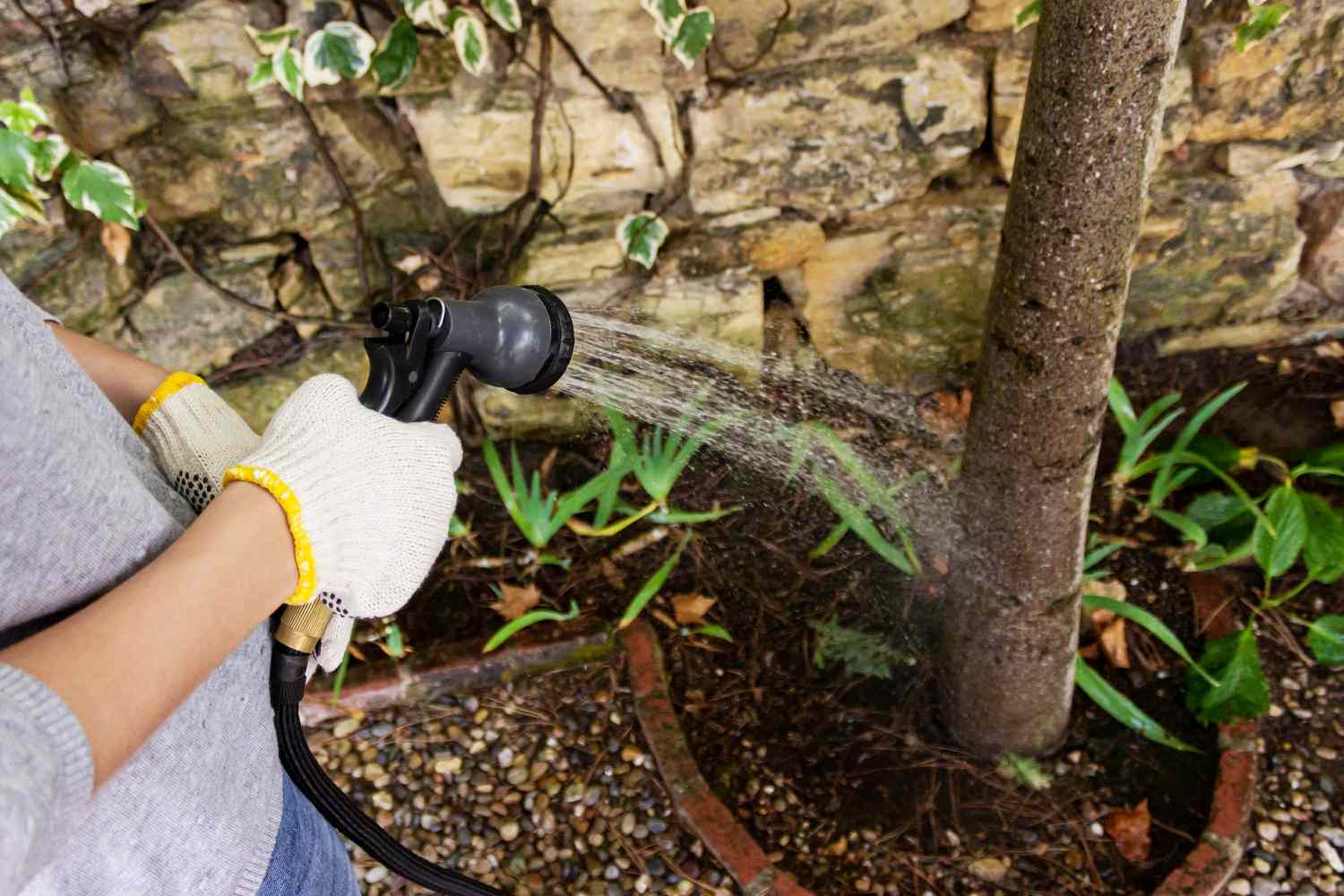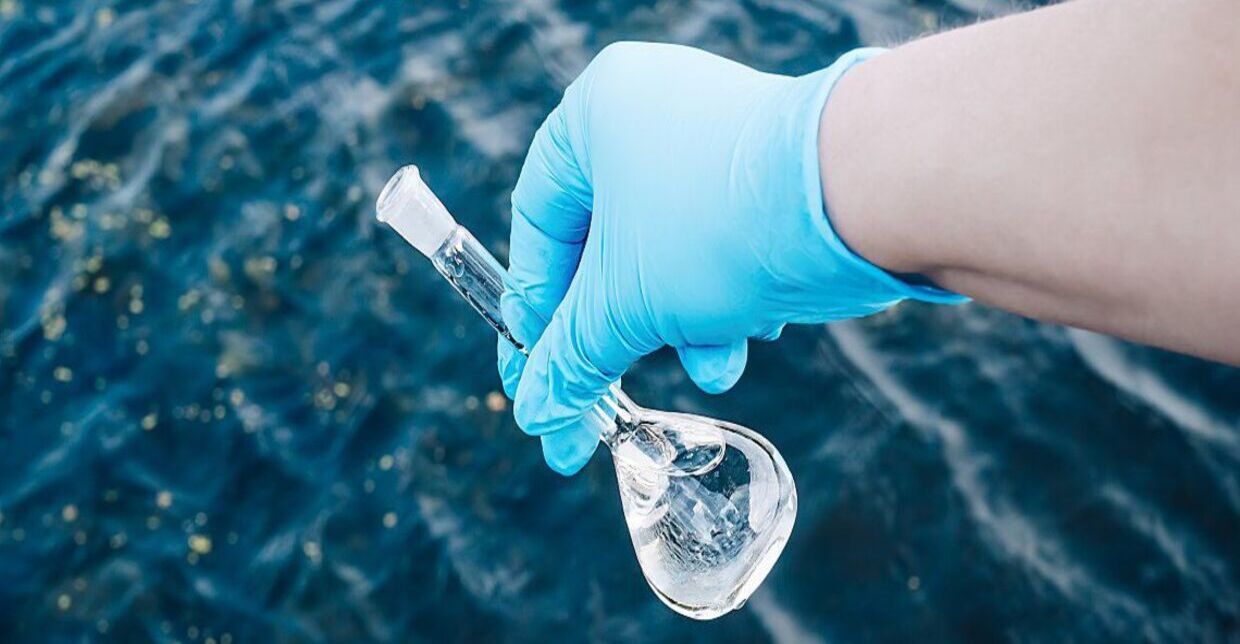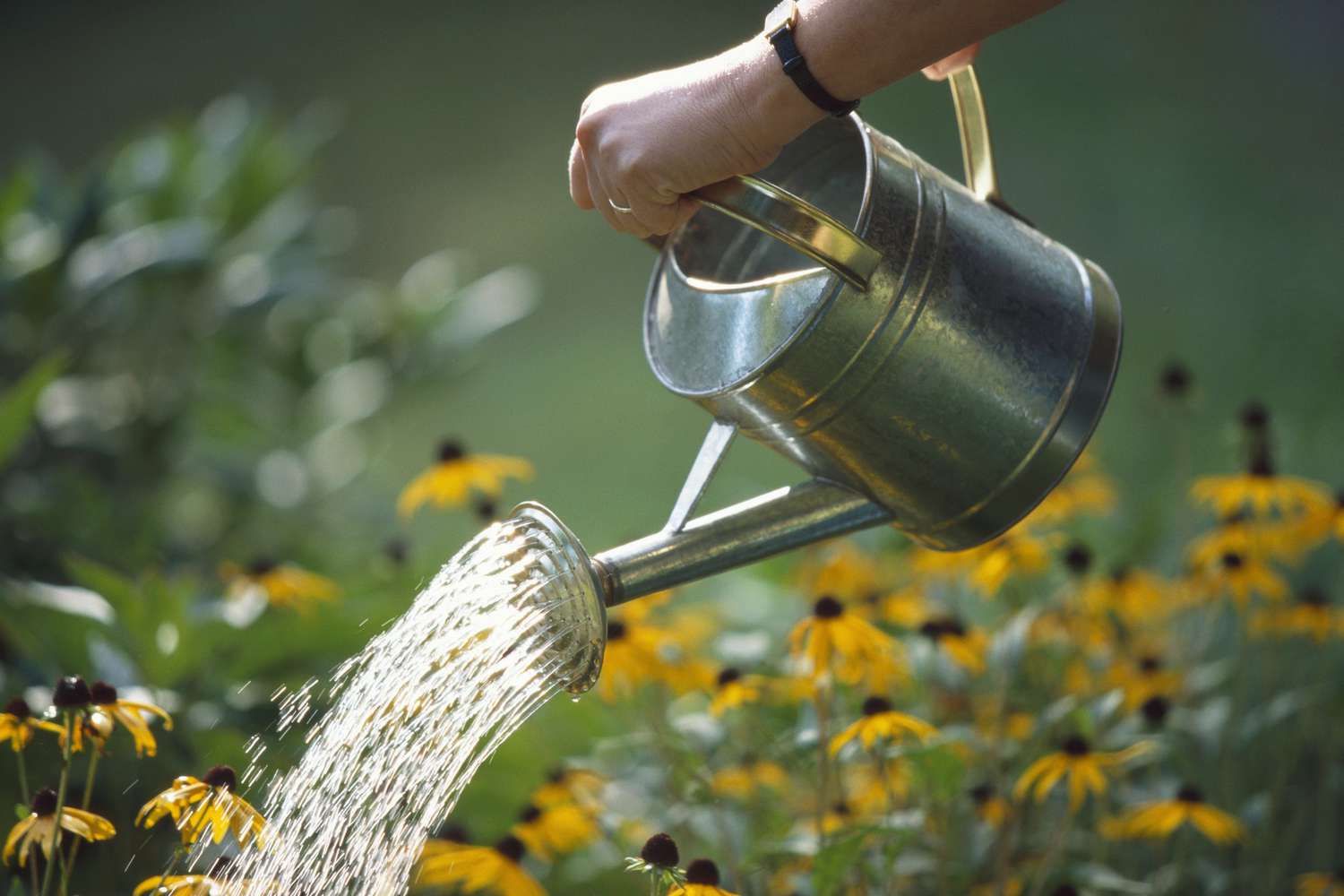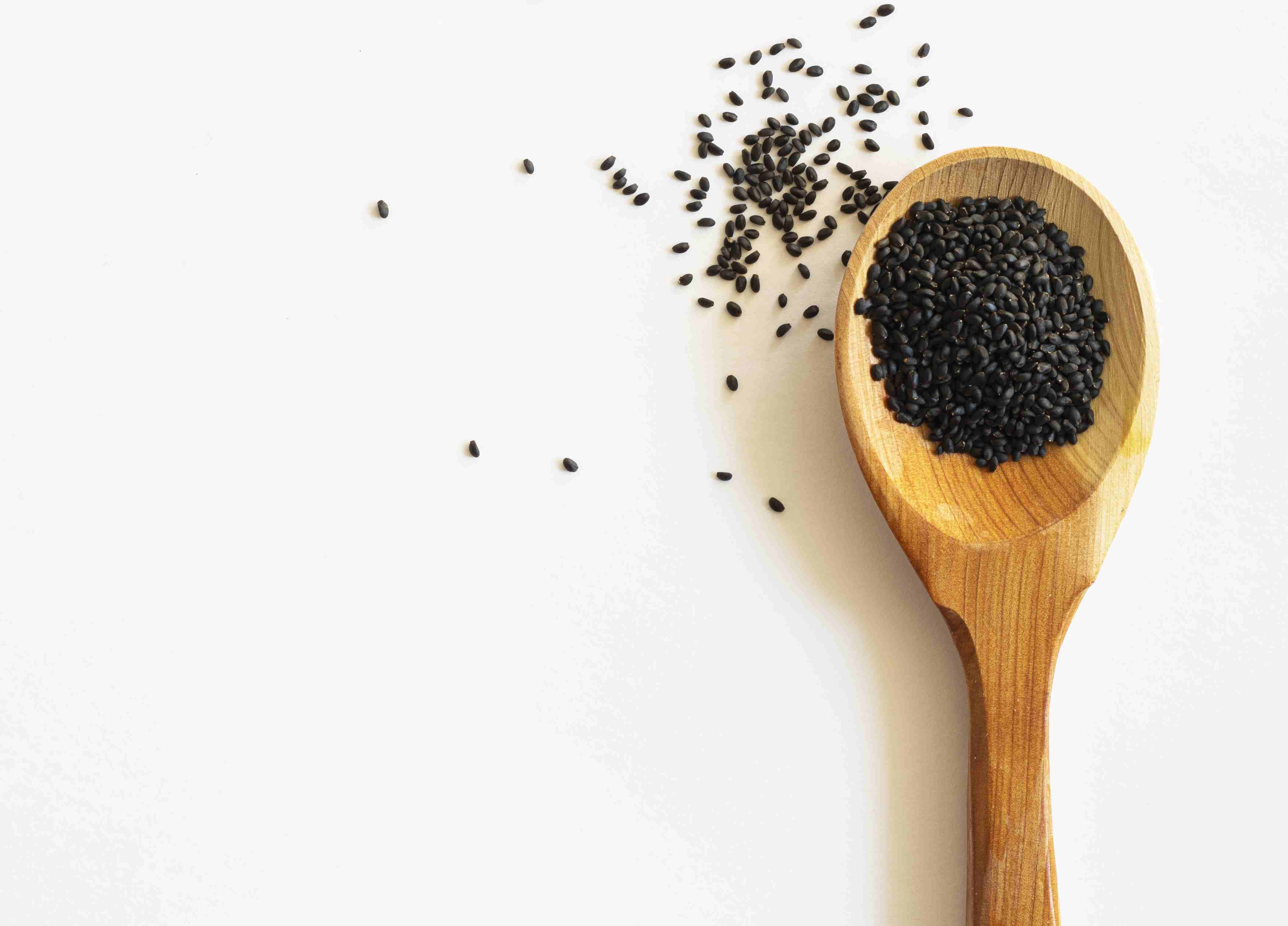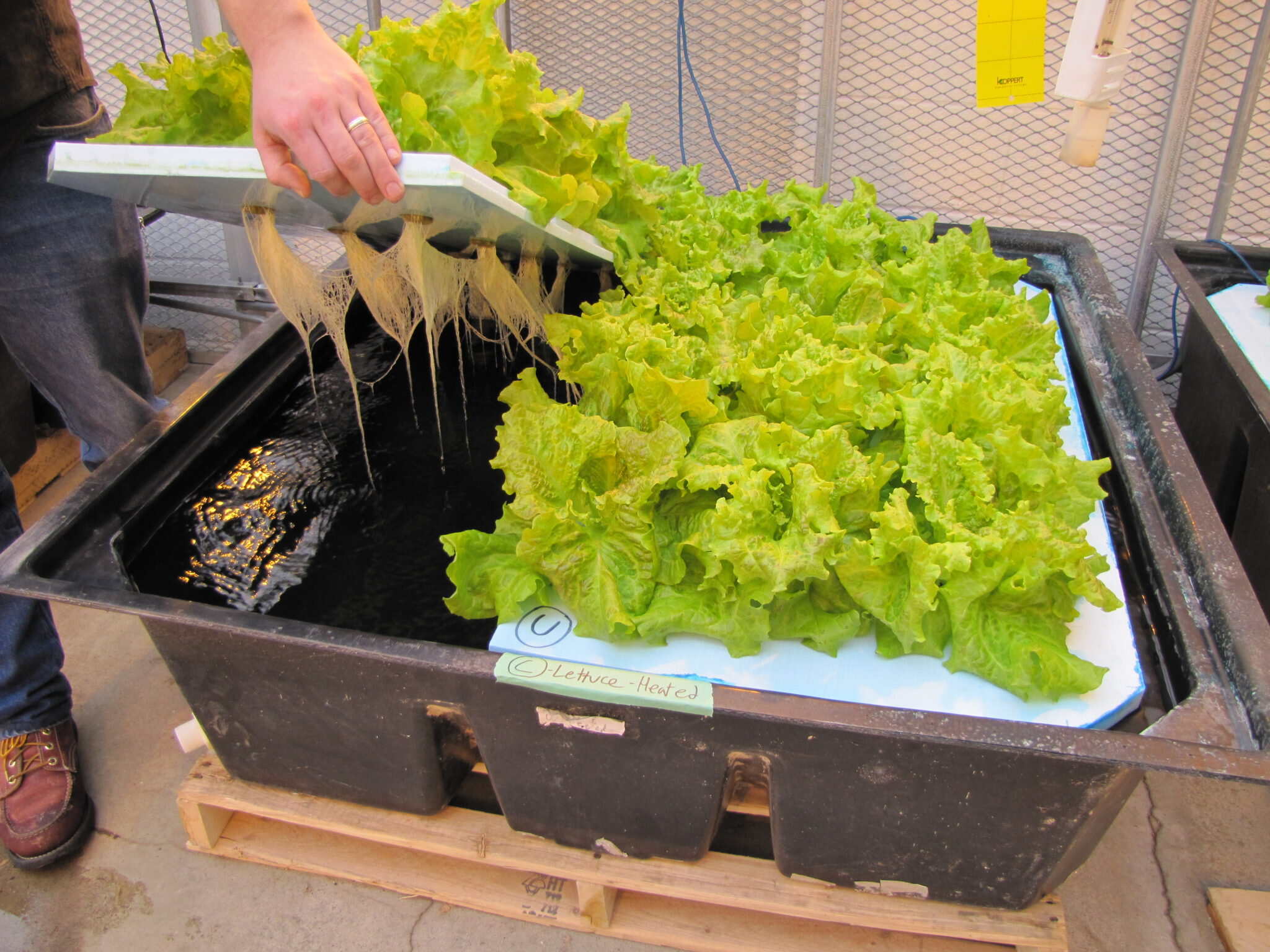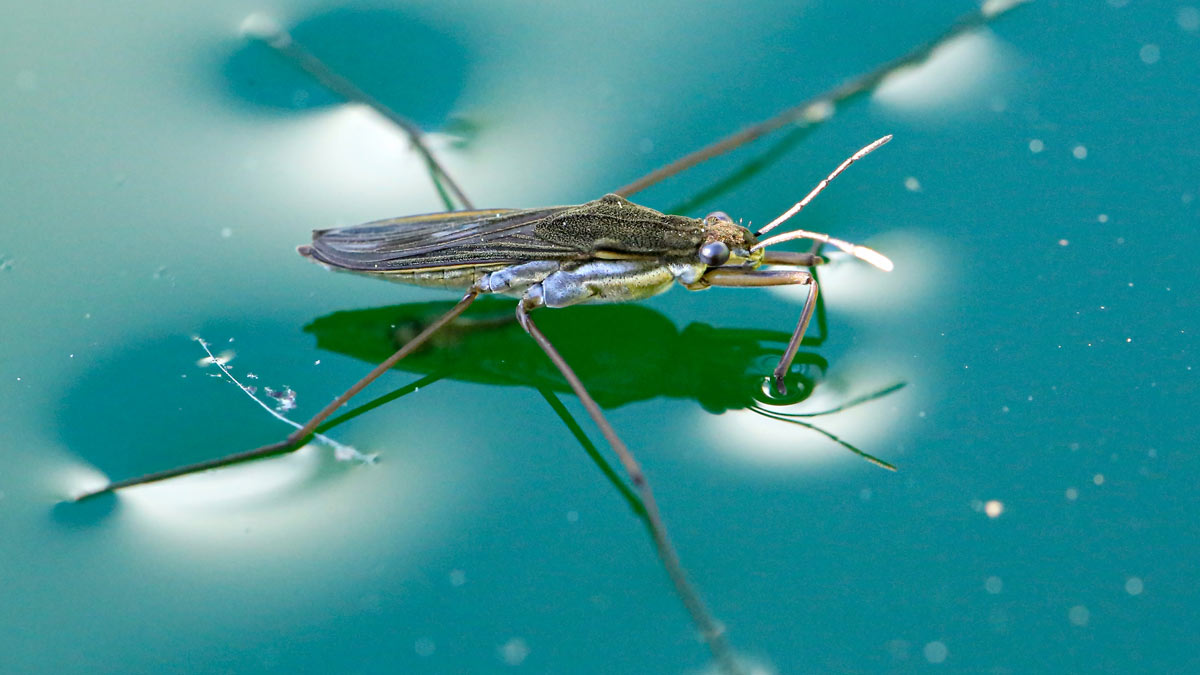Home>Gardening Tips and Tricks>Eco-Friendly Gardening>How To Get Water For Greenhouse
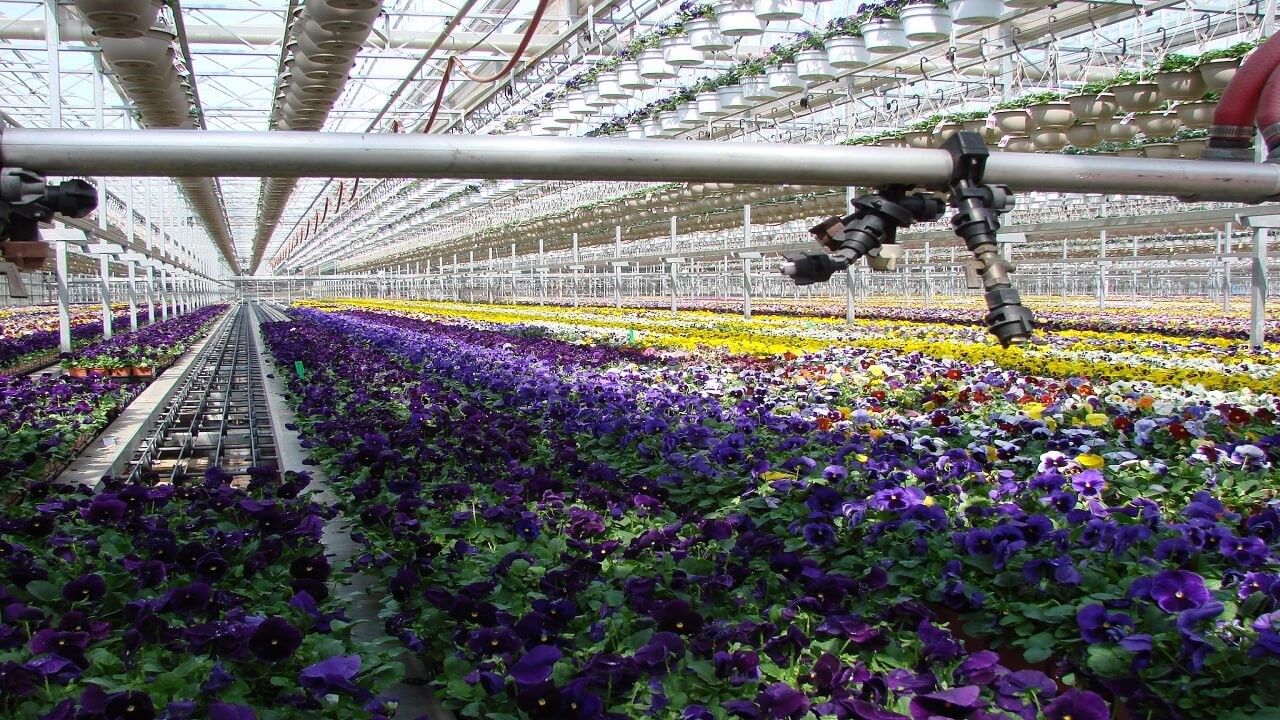

Eco-Friendly Gardening
How To Get Water For Greenhouse
Modified: January 22, 2024
Learn how to get water for your greenhouse using eco-friendly gardening techniques.
(Many of the links in this article redirect to a specific reviewed product. Your purchase of these products through affiliate links helps to generate commission for Chicagolandgardening.com, at no extra cost. Learn more)
Table of Contents
- Introduction
- Assessing Water Needs for a Greenhouse
- Collecting Rainwater for a Greenhouse
- Installing a Water Catchment System
- Utilizing a Well for Greenhouse Water
- Connecting to a Municipal Water Supply
- Filtration and Purification Techniques for Greenhouse Water
- Efficient Irrigation Methods for Greenhouse Watering
- Monitoring and Conserving Water Usage in a Greenhouse
- Conclusion
Introduction
Welcome to the world of eco-friendly gardening! In this article, we will explore the fascinating realm of greenhouse water management. Greenhouses offer a controlled environment for plants to thrive in, but they also require adequate and sustainable water sources to support their growth. By understanding the various methods of obtaining and conserving water, you can contribute to a more environmentally friendly and sustainable gardening practice.
Water is a precious resource, and it is essential to consider how we can effectively use and conserve it in our greenhouse setups. Whether you are a beginner or an experienced gardener, it never hurts to explore new ways of obtaining water and implementing efficient irrigation techniques for your greenhouse. From collecting rainwater to utilizing wells and connecting to municipal water supplies, there are numerous options available to meet your greenhouse’s water needs.
In this article, we will delve into the different aspects of greenhouse water management. We will discuss the importance of assessing water requirements for your specific greenhouse setup, explore the methods of collecting rainwater and installing water catchment systems, learn about utilizing wells, and connecting to municipal water supplies. Additionally, we will cover the importance of filtration and purification techniques to ensure the quality of water used in your greenhouse.
Moreover, we will explore various efficient irrigation methods that can significantly reduce water usage while promoting optimal plant growth. These methods include drip irrigation, soaker hoses, and automated irrigation systems that can be tailored to meet specific plant needs while conserving water.
Lastly, we will delve into the significance of monitoring and conserving water usage in a greenhouse. By implementing water-saving practices, such as regularly checking for leaks, adjusting irrigation schedules, and recycling water, you can minimize waste and make your greenhouse more sustainable.
So, let’s embark on this eco-friendly gardening journey and discover how we can obtain, utilize, and conserve water for our greenhouses. By implementing these practices, we can contribute to a greener and more sustainable future for our planet.
Assessing Water Needs for a Greenhouse
Before diving into the various methods of obtaining water for your greenhouse, it is crucial to assess the water requirements of your specific setup. Several factors influence the water needs of a greenhouse, including the types of plants being cultivated, the size of the greenhouse, and the environmental conditions.
Start by considering the plants you plan to grow in your greenhouse. Different plants have varying water requirements, and it is important to understand their specific needs. Some plants, such as succulents, require less water and can tolerate drier conditions, while others, like tomatoes or cucumbers, require more frequent watering.
Next, evaluate the size of your greenhouse. The larger the greenhouse, the more water it will typically require. Consider the surface area and volume of the greenhouse when determining the water needs.
Environmental factors play a crucial role in assessing water requirements. The temperature, humidity levels, ventilation, and the choice of growing medium can all affect the water needs of your plants. Higher temperatures and low humidity levels can cause water to evaporate more quickly, increasing the need for irrigation.
Once you have considered these factors, you can gauge the water needs of your greenhouse. This information will help you determine the appropriate water sources and irrigation methods to ensure your plants receive the necessary amount of water without over- or underwatering.
Remember that it is always better to start with less water and gradually increase if needed. Overwatering can lead to several problems, including root rot, fungal diseases, and nutrient leaching. Monitoring the soil moisture levels and the overall health of your plants will allow you to adjust your watering practices accordingly.
By accurately assessing the water needs of your greenhouse, you will be able to provide the necessary irrigation and maintain a healthy growing environment for your plants. This knowledge will serve as a foundation for implementing the most suitable water management techniques for your specific greenhouse setup.
Collecting Rainwater for a Greenhouse
Rainwater is a fantastic resource for greenhouse gardening. It is free, abundant, and naturally pure, making it ideal for watering plants. Collecting rainwater not only provides a sustainable water source but also helps to reduce your reliance on other water supplies.
To collect rainwater for your greenhouse, you will need a proper water catchment system. The most common method is to install a rainwater harvesting system that directs rainwater from the roof of your greenhouse into a collection container.
First, ensure that your greenhouse roof has gutters and downspouts in place. These will direct the water flow. Next, position large storage tanks or barrels at the end of the downspouts to collect the rainwater. You can find pre-made rain barrels or repurpose large containers such as food-grade drums or IBC totes.
It is crucial to keep the rainwater collection system clean to prevent contamination. Install a mesh screen or a fine filter at the downspout entrance to prevent leaves, debris, and insects from entering the container. This will also help to filter out any larger particles that could clog your watering system.
Additionally, consider adding a first-flush diverter to your setup. This device diverts the initial rainwater flow, which may contain pollutants or debris, away from the storage tank. It ensures that only clean water goes into your collection container.
To make the rainwater easily accessible for greenhouse watering, install a tap or spigot near the bottom of the storage tank. This will allow you to connect a hose or watering can directly to the tank for convenient watering.
Remember to monitor the water level in your rainwater storage container regularly. Depending on the rainfall in your area and the size of your greenhouse, you may need to supplement with alternative water sources during drier periods.
Collecting rainwater for your greenhouse not only conserves water but also promotes natural and sustainable gardening. By utilizing this free resource, you can minimize your environmental impact and create a more self-sufficient gardening system.
Next, let’s explore the installation of water catchment systems for your greenhouse to maximize rainwater collection and utilization.
Installing a Water Catchment System
An efficient water catchment system is essential for maximizing the collection and utilization of rainwater in your greenhouse. Installing such a system will not only ensure a sustainable water supply but also help you reduce your environmental impact and water costs.
The first step in installing a water catchment system is to assess your greenhouse’s roof and determine the best locations for downspouts. Ideally, you want to position the downspouts near the corners of the greenhouse to capture as much rainwater as possible.
Next, you will need to install gutters along the edges of the greenhouse roof. These gutters will collect the rainwater and channel it towards the downspouts. It is crucial to ensure that the gutters are properly sloped towards the downspouts to allow for efficient drainage.
Once the gutters are in place, connect the downspouts to the gutters. You can use PVC pipes or flexible downspout extensions to guide the water flow. Make sure the downspouts are securely attached to the greenhouse structure and positioned over the collection containers or rain barrels.
When selecting your collection containers, consider the size and material. Large storage tanks or barrels are the most common choices, but you can also opt for underground cisterns or above-ground storage tanks. Ideally, choose containers made from food-grade material to ensure the water quality remains high.
Position the collection containers near the downspouts to allow for easy transfer of rainwater. If using multiple containers, create a system to connect them, ensuring water flows seamlessly from one container to another.
Remember to implement filtration systems to remove any debris or impurities from the collected rainwater. A mesh screen or a fine filter attached to the downspout entrance can help prevent leaves or debris from entering the containers.
Lastly, ensure that the collection containers are covered to prevent evaporation, contamination, and mosquito breeding. You can use lids or screens specifically designed for rainwater storage. Additionally, regular maintenance and cleaning of the catchment system will help ensure its effectiveness and longevity.
Installing a water catchment system in your greenhouse is a worthwhile investment. It allows you to make the most of the rainfall in your area, providing a sustainable and cost-effective water source for your plants.
In the next section, we will explore utilizing wells as an alternative water source for your greenhouse.
Utilizing a Well for Greenhouse Water
If you have access to a well on your property, utilizing it as a water source for your greenhouse can be an excellent option. Wells provide a consistent and reliable supply of water, making them a convenient choice for greenhouse irrigation.
Before using a well for greenhouse water, it is important to ensure that the water quality is suitable for your plants. Conduct periodic water tests to check for any potential contaminants or imbalances in pH levels. If necessary, treat the well water to adjust its pH or remove any harmful substances that may affect plant health.
Once you have established the quality of the well water, you can install a pump system to transport the water from the well to your greenhouse. Submersible pumps are commonly used for well water extraction. Place the pump inside the well and connect it to a pipeline or hose that leads directly to your greenhouse.
It is crucial to properly size the pump and pipeline to ensure the adequate supply of water for your greenhouse. Factors such as the size of the greenhouse, the water requirements of your plants, and the distance between the well and the greenhouse should all be considered in determining the pump capacity.
Consider installing a filtration system to remove any sediments or impurities from the well water before it reaches your greenhouse. This will help ensure the water remains clean and suitable for your plants. Filtration systems may include mesh screens, sediment filters, and even UV sterilizers to eliminate any potential harmful microorganisms.
Monitor the water level in your well regularly to avoid over-pumping and causing damage to the groundwater supply. It is best to consult with a professional well driller or groundwater expert to determine the appropriate pumping rate and ensure sustainable water usage.
Utilizing a well for your greenhouse water can provide a reliable and consistent supply throughout the year. By implementing proper maintenance and monitoring, you can have a sustainable water source that supports the growth of your plants in a controlled environment.
In the next section, let’s explore the option of connecting your greenhouse to a municipal water supply, particularly for areas where wells may not be available or suitable.
Connecting to a Municipal Water Supply
If you do not have access to a well or other independent water sources, connecting your greenhouse to a municipal water supply is a practical solution. Most urban and suburban areas provide a reliable and treated water supply that can be conveniently utilized for greenhouse watering.
The first step in connecting to a municipal water supply is to determine the location of the water hookup on your property. This is typically a valve or connection point at the property line or near the main water line. Consult with your local municipal water authority or a licensed plumber to determine the best location for your greenhouse connection.
Once you have located the water hookup, you will need to install piping and valves to channel the water from the municipal supply to your greenhouse. This may involve trenching and laying underground pipes or running pipes above ground, depending on the distance and the layout of your greenhouse.
Ensure that the piping used is suitable for irrigation purposes and complies with local building codes. PVC pipes or flexible polyethylene pipes are commonly used for greenhouse irrigation systems. Additionally, install shut-off valves and backflow prevention devices to regulate and protect the water supply.
It is important to be mindful of water pressure when connecting to a municipal supply. Greenhouse irrigation systems typically require a regulated and consistent water pressure. Consider installing pressure regulators to ensure the water pressure is within the optimal range for your irrigation setup.
Connecting to a municipal water supply provides a reliable and treated water source for your greenhouse. However, it is important to be mindful of water usage and any potential water restrictions that may be imposed by the municipality. Implementing water-saving practices such as drip irrigation or automated irrigation systems can help optimize water usage and minimize waste.
Regularly monitor and maintain your greenhouse watering system to ensure efficient water usage and prevent any leaks or malfunctions. It is also a good practice to periodically check the water quality provided by the municipal supply to ensure it meets the needs of your plants.
By connecting your greenhouse to a municipal water supply, you can have a consistent and regulated water source that supports the growth of your plants in an urban or suburban environment.
In the next section, we will explore filtration and purification techniques to ensure the water quality in your greenhouse.
Filtration and Purification Techniques for Greenhouse Water
Maintaining high water quality is crucial for the health and productivity of your greenhouse plants. Filtration and purification techniques help ensure that the water used for irrigation is free from contaminants, chemicals, and pathogens, providing an optimal growing environment.
There are various filtration methods that can be employed to improve the quality of your greenhouse water. One common technique is using mesh screens or filters at the entry point of your water source, whether it’s a rainwater collection system, well, or municipal supply. These screens help remove larger particles, debris, and insects from entering the water system.
For more advanced filtration, consider using sediment filters, activated carbon filters, or reverse osmosis systems. Sediment filters are effective in removing fine particles and sediments, while activated carbon filters help remove organic compounds, chlorine, and certain chemicals that may be present in the water. Reverse osmosis systems utilize a semi-permeable membrane to remove impurities, including heavy metals, minerals, and microorganisms.
UV sterilization is another purification technique that can be employed to eliminate harmful microorganisms from the water. UV sterilizers use ultraviolet light to destroy bacteria, viruses, and other pathogens, ensuring that the water used in your greenhouse is safe for your plants.
It is important to regularly maintain and replace the filtration and purification components to ensure their effectiveness. Follow the manufacturer’s guidelines for cleaning and replacing filters, and regularly monitor the water quality to ensure it meets the desired standards.
When using any filtration or purification technique, it is essential to strike a balance between removing contaminants and preserving beneficial minerals and nutrients in the water. Some filtration methods may remove beneficial minerals along with the impurities, which can affect plant growth. In such cases, consider adding mineral supplements or using balanced nutrient solutions for plant nutrition.
Implementing filtration and purification techniques in your greenhouse helps create a healthy and safe environment for your plants. It reduces the risk of diseases, minimizes the impact of harmful chemicals, and promotes optimal growth and productivity.
As we move forward, let’s explore efficient irrigation methods that can further contribute to water conservation and sustainable greenhouse gardening.
Efficient Irrigation Methods for Greenhouse Watering
Efficient irrigation methods play a vital role in conserving water and ensuring optimal plant growth in a greenhouse setting. By utilizing smart watering techniques, you can reduce water waste, promote water absorption by plants, and create a more sustainable watering system.
One effective method is drip irrigation, which delivers water directly to the base of plants through a network of small tubes or emitters. This targeted approach minimizes water loss due to evaporation or runoff, ensuring that water reaches the roots where it is most needed. Drip irrigation systems can be easily installed and can be automated with timers or sensors for precise and efficient watering.
Soaker hoses are another efficient option for greenhouse watering. These porous hoses release water slowly along the length of the hose, allowing for deep root penetration and reducing evaporation. Soaker hoses can be placed along the plant rows or buried under a layer of mulch to ensure even distribution of water to the root zone.
Automated irrigation systems provide convenience and efficiency by allowing you to set specific schedules and durations for watering. These systems can be programmed to water during optimal times while avoiding unnecessary watering during periods of rain. By utilizing moisture sensors or weather-based controllers, automated systems only irrigate when necessary, reducing water waste and promoting water conservation.
Consider utilizing hydroponic systems, such as nutrient film technique (NFT) or ebb and flow systems, for greenhouse cultivation. These systems recirculate the water and nutrient solution, minimizing water usage while providing plants with a constant and controlled supply of nutrients. Hydroponic systems can be customized to match the water needs of different plant varieties and growth stages.
Implementing mulching techniques in your greenhouse can also contribute to efficient watering. Mulch helps retain soil moisture, reduce evaporation, and prevent weed growth. Organic materials such as straw, wood chips, or compost can be used as mulch, providing insulation and moisture retention benefits to your plants.
Regularly monitor and adjust your watering practices based on the specific needs of your plants. Factors such as plant types, growth stages, and environmental conditions can influence water requirements. Avoid overwatering by allowing the top layer of soil to dry slightly between watering sessions, promoting healthy root development.
By implementing efficient irrigation methods in your greenhouse, you can maximize water usage, minimize waste, and create a sustainable watering system for your plants. Whether through drip irrigation, soaker hoses, automated systems, or hydroponics, efficient watering practices contribute to a healthier and more productive greenhouse environment.
In the next section, we will explore effective ways to monitor and conserve water usage in your greenhouse.
Monitoring and Conserving Water Usage in a Greenhouse
Monitoring and conserving water usage in your greenhouse is essential for sustainable and responsible gardening. By implementing effective monitoring techniques and water-saving practices, you can minimize water waste, promote efficient irrigation, and contribute to a more environmentally friendly greenhouse environment.
One of the first steps in monitoring water usage is to regularly check for leaks or malfunctioning equipment such as drip irrigation lines or sprinklers. Even small leaks can result in significant water loss over time. Perform routine inspections to ensure that all irrigation systems and pipes are properly maintained and functioning optimally.
Installing water meters can provide valuable insight into the amount of water consumed by your greenhouse. By tracking water usage over time, you can identify trends, pinpoint irregularities, and adjust your watering practices accordingly. Water meters also serve as a tool for accountability, allowing you to set conservation goals and track your progress towards reducing water consumption.
Implementing a water schedule based on plant needs and environmental factors can help optimize water usage. Consider factors such as weather conditions, plant growth stage, and soil moisture levels when determining the frequency and duration of irrigation. Utilize moisture sensors or soil moisture meters to accurately assess the moisture content of the soil and avoid overwatering.
Utilize collected rainwater or other alternative water sources for greenhouse irrigation. By utilizing these sources, you can reduce reliance on municipal water or other resources, conserving these valuable supplies for other needs. Combine rainwater harvesting with efficient irrigation methods to maximize water conservation.
Consider incorporating recycling systems into your greenhouse setup. Collect and reuse excess water runoff or drainage to water plants that require less frequent irrigation or plants in containers. This water can be collected in trays or storage tanks and redistributed back to the plants when needed. Implementing recycling systems helps reduce water waste and promotes sustainability in your greenhouse operation.
Take advantage of natural weather patterns to conserve water. Adjust your irrigation schedule accordingly during periods of rainfall or high humidity. By synchronizing watering with natural precipitation, you can minimize water usage and create a more sustainable watering routine.
Education and communication are essential in promoting water conservation in your greenhouse. Train your staff or family members on proper watering techniques and the importance of water conservation. Encourage everyone involved to be mindful of water usage and actively participate in efforts to minimize waste.
Regularly monitor and assess the results of your water conservation efforts. Track the volume of water saved, compare it to previous usage, and celebrate any significant reductions. This ongoing monitoring allows you to identify areas for improvement and make necessary adjustments to further enhance your water conservation practices.
By monitoring and conserving water usage in your greenhouse, you not only contribute to a more sustainable and eco-friendly gardening practice but also save on water costs and reduce your environmental impact. It is a win-win situation for both your plants and the planet.
In the final section, we will summarize the main points discussed and offer closing thoughts on eco-friendly gardening and water management in greenhouses.
Conclusion
Eco-friendly gardening and sustainable water management go hand in hand when it comes to greenhouse cultivation. By understanding the water needs of your plants, exploring various water sources, and implementing efficient irrigation methods, you can create a more environmentally friendly and resource-efficient greenhouse environment.
Assessing the water needs of your greenhouse is the first step in ensuring effective water management. Consider factors such as plant types, greenhouse size, and environmental conditions to determine the appropriate amount of water required.
Collecting rainwater through a well-designed water catchment system provides a sustainable and cost-effective water source. Installing gutters, downspouts, and storage containers allows you to make the most of this free and abundant resource.
Utilizing wells and connecting to a municipal water supply are viable options for those without access to rainwater. Ensuring the quality of the water and implementing appropriate filtration techniques are essential to maintain optimal growing conditions for your plants.
Efficient irrigation methods, such as drip irrigation or soaker hoses, significantly reduce water waste and promote water absorption by the plants’ roots. Automated irrigation systems and hydroponic setups further enhance water conservation efforts.
Monitoring and conserving water usage involves regular inspections, installing water meters, and utilizing alternative water sources. Recycling and reusing water runoff, adjusting watering schedules based on weather patterns, and educating your team about water conservation all contribute to sustainable greenhouse water management.
By integrating these practices into your greenhouse operation, you not only reduce your environmental impact but also save on water costs and promote healthier plant growth. Remember that small changes can make a big difference, so start implementing these strategies gradually and track your progress along the way.
Embrace the role of an eco-conscious gardener and contribute to a greener future. By prioritizing water conservation and sustainable practices in your greenhouse, you become part of a larger movement towards a more sustainable world. Your efforts today will have a positive impact on the environment and inspire others to follow in your footsteps.

